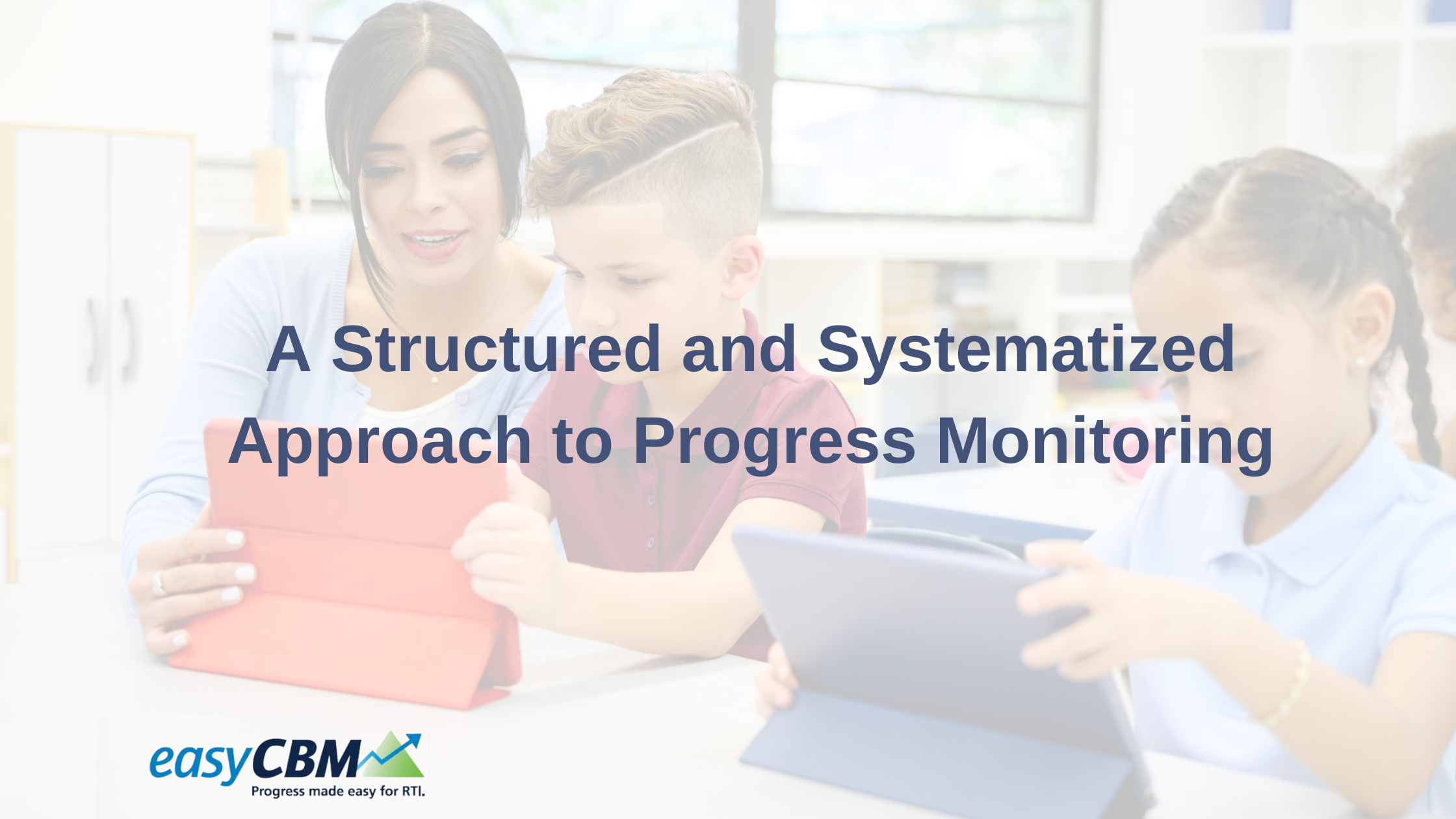A Structured and Systematized Approach to Progress Monitoring

As educators, we understand the importance of monitoring students' progress during the year. Yet, how do we effectively and efficiently implement the process? How do we ensure the interventions in place are accelerating student growth? A structured and systematic progress monitoring program that includes the following steps will enable educators to maximize their efforts.
Key Steps to Monitoring the Progress of Your Students
- Administer a Curriculum Based Measurement (CBM) tool within the first few weeks of school to determine the students who need monitoring. Consider using benchmark measures that are research-based and have alternate forms, for flexible use. The data provided is your baseline.
- Provide access to the benchmark results so all stakeholders can measure student progress.
- Perform a skills analysis and analyze the item-level reports to diagnose the deficiencies.
- Prioritize the skills for progress monitoring and determine the specific probes to administer.
- Add the progress monitoring probe data and goals to the student's benchmark results, where scores can be graphed to see progress across the year.
- Leverage interventions, instructional goals, and the curriculum to target identified skills that need growth.
- Review the scores to determine progress, skill mastery, and changes needed.
- Document the specific interventions implemented, the frequency of interventions, the curriculum incorporated, and the implementation timeframe, to show their effectiveness.
- Regularly collect more data points and continue to progress monitor at the student's instructional level until the next benchmark assessment.
- Compare the student's actual rate of growth to the expected rate of growth.
- Adjust interventions as needed, considering frequency, timeframe, and curriculum, as well as changing the intervention type, fading it, or exiting the student from the intervention(s).

Progress monitoring is a continuous process that needs review and repetition on an on-going basis throughout the year.
Administering Off-Grade Level Probes
Oftentimes, teachers need to administer progress monitoring probes that are below the student's present grade level. Administering such probes are needed to support students with developing skills when they are performing below the average of the norm group.
When using off-grade level measures:
- Maintain consistency of the probes administered, after determining the grade level for administration
- Administer a probe only as often as change is expected
- Realize that change is a function of curriculum and instruction, not just measurement
- Consider other factors for a student's performance (attention, concentration, attendance, personal issues, etc.)
Teachers need to assist students in progressing to the most challenging grade-level probes as quickly as possible. Each student's trajectory is likely to be slightly different and will depend on the student's underlying skill deficits and the intensity of the provided intervention(s).
When Interventions Are Not Successful
When the student stops responding to the strategies and interventions in place, consider answering the following questions:
- Is the intervention aligned specifically to the skill deficit?
- Does the group size for intervention implementation need adjusting? Does the student need more individualized instruction?
- Has the intervention been implemented with fidelity?
- Does the student need more frequent or additional interventions?
- Have the instructional approaches varied for this student? In what manner might this student learn best?
Conducting Data Analysis Sessions
Educators continually need to evaluate progress throughout the school year and determine progress towards the defined goals. Conducting data analysis sessions within a PLC or team setting allows for data protocols to be implemented.
During these sessions:
-
Examine the student's achievement scores, identify their growth between measures, and compare their performance to their ability
-
Associate data within school(s) and classes and review demographic data
-
Compare proficiency levels among the subtests
-
Identify professional development and additional PLC meetings needed
-
Discuss intervention strategies and determine a cadence for measuring the effectiveness of such strategies, besides an expected timeframe to see growth
-
Link the data with classroom and formative assessments
-
Share the data with stakeholders, so they understand the need for progress monitoring
Above all, progress monitoring data must be analyzed throughout the learning process to affect change and improve instructional decision-making. Ensuring that you have a structured system in place to easily follow will maximize student growth, build student confidence, and ensure success for all involved.

.png?width=900&name=Copy%20of%20Copy%20of%20EL%20webinar%201%20(2).png)
.png?width=900&name=Before%2c%20During%20%26%20After%20the%20WJ-IV%20ACH%20Tips%20for%20Effective%20Assessing%20(3).png)

-1.png)